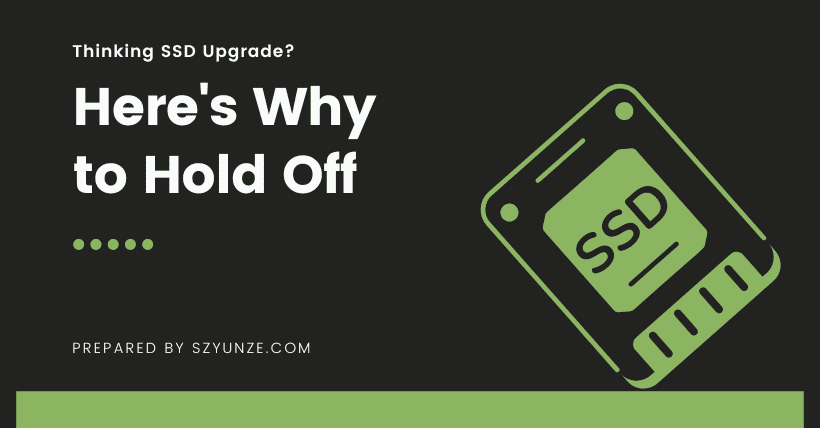When choosing hardware for a new computer, many people tend to buy the latest and best components. However, when selecting an SSD, simply choosing the PCIe 5.0 SSD with the fastest transfer speed based on specs is not a wise decision.
Firstly, unless you regularly need to handle a large amount of sequential read and write tasks, you don’t need to spend extra budget on these high-end products. In reality, choosing an SSD within your budget can still provide almost the same experience in everyday use.
If you’ve been using a slow HDD for gaming, upgrading to an SSD will indeed offer a significant boost. However, almost all SSDs on the market today are fast enough for gaming needs, as the loading time of game resources won’t be significantly shortened by SSD speed. Even the fastest PCIe 5.0 SSD only offers a difference of a few seconds compared to PCIe 4.0 SSD in game loading times, which hardly affects the actual gaming experience.
As DirectStorage technology is gradually adopted by games, this gap becomes less noticeable, so you don’t need to chase the top-tier SSDs just for gaming.
Even when comparing PCIe Gen 3, Gen 4, and Gen 5, you won’t notice a significant difference in gaming experience. Similarly, switching between devices like the Steam Deck (using PCIe 3.0 interface) and Legion Go or ROG Ally (using PCIe 4.0 interface) won’t have much impact on game performance.
When installing games, the determining factor is often network speed rather than SSD read and write speeds.
Secondly, in most cases, you won’t notice a significant difference between a SATA SSD and the latest NVMe SSD, as system load times, game launch times, and application response speeds are almost identical. For everyday tasks like browsing the web or handling documents, you don’t need ultra-fast SSDs to support these tasks.
Of course, having a faster SSD might make you feel better, but it’s more psychological comfort rather than a tangible performance boost.
This is not to say you shouldn’t buy NVMe SSDs, especially when their price is close to that of SATA SSDs. Even the slower PCIe 3.0 SSD is four times faster than a SATA SSD, so choosing an NVMe SSD is a reasonable choice. However, you don’t need to pursue extreme speeds of up to 14,000MB/s, as such speeds mainly manifest in sequential data transfers, like copying data from an old drive to a new one.
For tasks that involve frequently moving or accessing small files in everyday use, the difference between PCIe 5.0 SSD and PCIe 4.0 or PCIe 3.0 SSD is minimal.
Lastly, even in video editing, while SSDs can indeed help, you don’t necessarily need the fastest and newest products on the market. A SATA SSD with speeds of 500-550MB/s is already sufficient for most video editing tasks, and the money saved can be used to buy a higher-capacity SSD, which provides more significant benefits.
Having enough storage space to keep all your materials is more important than speed.
If you only do occasional video editing, a slower SSD will suffice. But for professionals who output videos daily, pursuing top-tier SSD speeds can indeed save you valuable time, and in this case, the budget shouldn’t be skimped.
Overall, if you’re upgrading an old device, moving from an HDD to an SSD will significantly improve daily work efficiency and even extend the lifespan of the device, preventing it from becoming electronic waste. If you want an SSD that’s faster than SATA, any PCIe 4.0 SSD will provide ample speed at a much lower cost than the latest PCIe 5.0.
Related:
- SSD Price Cuts Sep. 2024: The Return of Market Pressure
- SSD Data Loss After Power-Off? What You Need to Know

Disclaimer: This article is created by the original author. The content of the article represents their personal opinions. Our reposting is only for sharing and discussion purposes and does not imply our endorsement or agreement. If you have any objections, please get in touch with us through the provided channels.



